Comparative Proteomic Analysis of Rhipicephalus sanguineus sensu lato (Acari: Ixodidae) Tropical and Temperate Lineages: Uncovering Differences During Ehrlichia canis Infection
- PMID: 33585280
- PMCID: PMC7879575
- DOI: 10.3389/fcimb.2020.611113
Comparative Proteomic Analysis of Rhipicephalus sanguineus sensu lato (Acari: Ixodidae) Tropical and Temperate Lineages: Uncovering Differences During Ehrlichia canis Infection
Abstract
The tick vector Rhipicephalus sanguineus is established as a complex of closely related species with high veterinary-medical significance, in which the presence of different genetic, morphological, and biological traits has resulted in the recognition of different lineages within taxa. One of the most striking differences in the "temperate" and "tropical" lineages of R. sanguineus (s.l.) is the vector competence to Ehrlichia canis, suggesting that these ticks tolerate and react differently to pathogen infection. The present study addresses the SG and MG proteome of the R. sanguineus tropical and temperate lineages and compares their proteomic profile during E. canis infection. Batches of nymphs from the two lineages were allowed to feed on naïve and experimentally E. canis infected dogs and after molting, adults were dissected, and salivary glands and midgut tissues separated. Samples were screened for the presence of E. canis before proteomic analyses. The representation of the proteins identified in infected and non-infected tissues of each lineage was compared and gene ontology used for protein classification. Results highlight important differences in those proteomic profiles that added to previous reported genetic, biological, behavioral, and morphological differences, strengthening the hypothesis of the existence of two different species. Comparing infected and non-infected tissues, the results show that, while in midgut tissues the response to E. canis infection is similar in the salivary glands, the two lineages show a different pattern of protein representation. Focusing on the proteins found only in the infected condition, the data suggests that the cement cone produced during tick feeding may be implicated in pathogen infection. This study adds useful information to the debate on the controversial R. sanguineus systematic status, to the discussion related with the different vectorial competence occurring between the two lineages and identifies potential targets for efficient tick and tick-borne disease control.
Keywords: Ehrlichia; Rhipicephalus sanguineus; mialome; proteomics; sialome; ticks; vector competence.
Copyright © 2021 Sanches, Villar, Couto, Ferrolho, Fernández de Mera, André, Barros-Battesti, Machado, Bechara, Mateos-Hernández, de la Fuente, Antunes and Domingos.
Conflict of interest statement
The authors declare that the research was conducted in the absence of any commercial or financial relationships that could be construed as a potential conflict of interest.
Figures
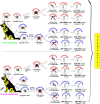
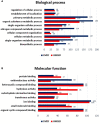
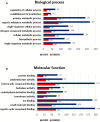
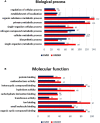
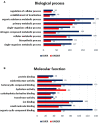
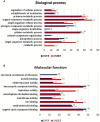
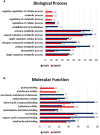
Similar articles
-
Infection with Ehrlichia canis and Anaplasma platys (Rickettsiales: Anaplasmataceae) in two lineages of Rhipicephalus sanguineus sensu lato (Acari: Ixodidae) from Argentina.Ticks Tick Borne Dis. 2015 Sep;6(6):724-9. doi: 10.1016/j.ttbdis.2015.06.006. Epub 2015 Jun 14. Ticks Tick Borne Dis. 2015. PMID: 26100492
-
Low genetic diversity of Ehrlichia canis associated with high co-infection rates in Rhipicephalus sanguineus (s.l.).Parasit Vectors. 2019 Jan 7;12(1):12. doi: 10.1186/s13071-018-3194-9. Parasit Vectors. 2019. PMID: 30616670 Free PMC article.
-
Epidemiological link between canine monocytic ehrlichiosis caused by Ehrlichia canis and the presence of Rhipicephalus sanguineus sensu stricto in Argentina.Parasitol Res. 2021 Feb;120(2):725-729. doi: 10.1007/s00436-020-07005-7. Epub 2021 Jan 8. Parasitol Res. 2021. PMID: 33415399
-
The brown dog tick, Rhipicephalus sanguineus (Latreille, 1806) (Acari: Ixodidae): from taxonomy to control.Vet Parasitol. 2008 Apr 15;152(3-4):173-85. doi: 10.1016/j.vetpar.2007.12.030. Epub 2008 Jan 3. Vet Parasitol. 2008. PMID: 18280045 Review.
-
Host surveys, ixodid tick biology and transmission scenarios as related to the tick-borne pathogen, Ehrlichia canis.Vet Parasitol. 2008 Dec 20;158(4):256-73. doi: 10.1016/j.vetpar.2008.09.013. Epub 2008 Sep 12. Vet Parasitol. 2008. PMID: 18963493 Free PMC article. Review.
Cited by
-
Ehrlichia canis Vaccine Development: Challenges and Advances.Vet Sci. 2024 Dec 5;11(12):624. doi: 10.3390/vetsci11120624. Vet Sci. 2024. PMID: 39728964 Free PMC article. Review.
References
-
- Alberdi P., Cabezas-Cruz A., Prados P. E., Rayo M. V., Artigas-Jerónimo S., de la Fuente J. (2019). The redox metabolic pathways function to limit Anaplasma phagocytophilum infection and multiplication while preserving fitness in tick vector cells. Sci. Rep. 9, 13236. 10.6019/PXD002181 - DOI - PMC - PubMed
-
- Antunes S., Couto J., Ferrolho J., Rodrigues F., Nobre J., Santos A. S., et al. (2018). Rhipicephalus bursa sialotranscriptomic response to blood feeding and Babesia ovis infection: identification of candidate protective antigens. Front. Cell. Infect. Microbiol. 8, 116. 10.3389/fcimb.2018.00116 - DOI - PMC - PubMed
Publication types
MeSH terms
LinkOut - more resources
Full Text Sources
Other Literature Sources

